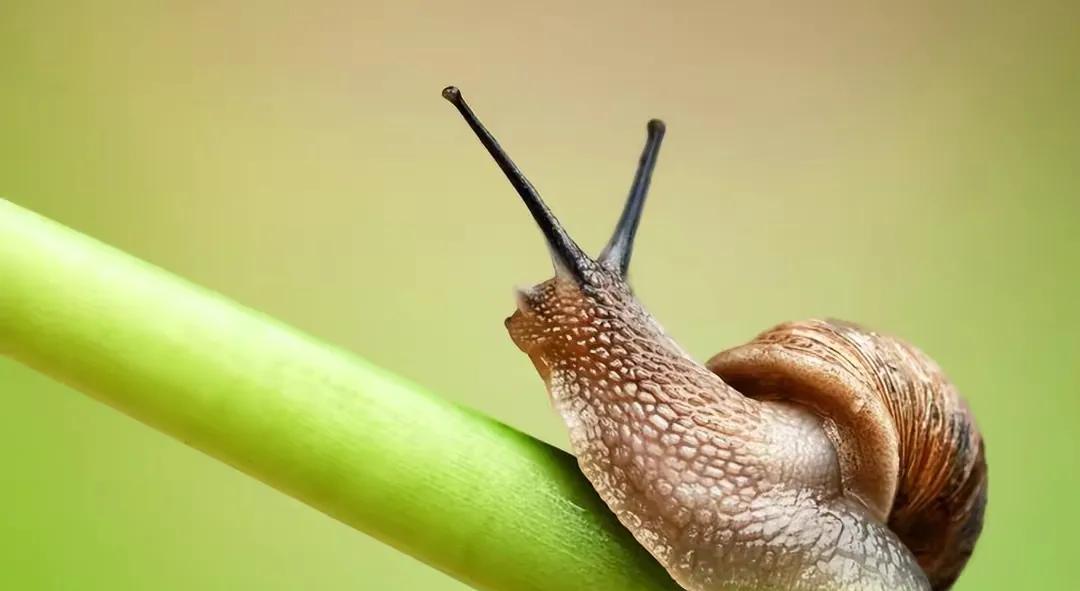Snails pick up zero
Snails, because they have two long antennae on their heads, like bull horns, are called snails. Snails, because the shell is swirling, or a nest. Jin CuiBao's "Ancient and Modern Notes • Fish Worms": "Snails, tarsal snails, shaped like mantises." "Snail house," a simple coop shaped like a snail. It also refers to simple houses. He often refers to his place of residence as humble" (Hanyu Da Dictionary).
Snails are mollusk phylum snails, with more than 40,000 species. The shell is generally lowly conical, right- or left-handed. The head is prominent, with 2 pairs of antennae, and the larger pair has eyes at the apex. The ventral surface of the head has a mouth, and the mouth has a toothed tongue, and there are many teeth on it, which can be used to scrape food.
Snails have carapaces, shaped like small snails, and are diverse in color; The head has four antennae, the head protrudes when walking, and when frightened, the head and tail are indented into the carapace; Snails have saliva on their bodies, which can restrain centipedes and scorpions. In June and July, when it is hot, it will hang under the leaves and rise upwards until it dies after the saliva is finished. Snail excretion is excreted near the breathing hole, called stomata. It drains the feces on its own body, eventually leaving it on the ground through the gastropods and mucus.
Snails prefer to live in a dark, damp, loose and humus-rich environment, lying diurnal and nocturnal, most afraid of direct sunlight, sensitive to environmental reactions, omnivorous and partial eating coexist. Prefers humidity and fears flooding.
Although snails do not have legs, they can move, thanks to their "muscular feet", which they move by their gastropods. Foot muscle contractions produce wavy movements that cause the snail to glide, which is based on wave movements that allow the snail to move from one place to another. At the same time the foot secretes a smooth mucus, with the help of mucus, the snail can slide on various surfaces, retain its moisture, reduce friction and reduce the risk of being injured by sharp objects. The slime remains where the snail crawls, and the ground it crawls on becomes a shiny "path.". Snails are recognized as low-speed animals, and an adult snail typically has a speed of 1 mm/s, climbing only 6 cm in that minute and 360 cm in an hour, less than three arms outstretched.
